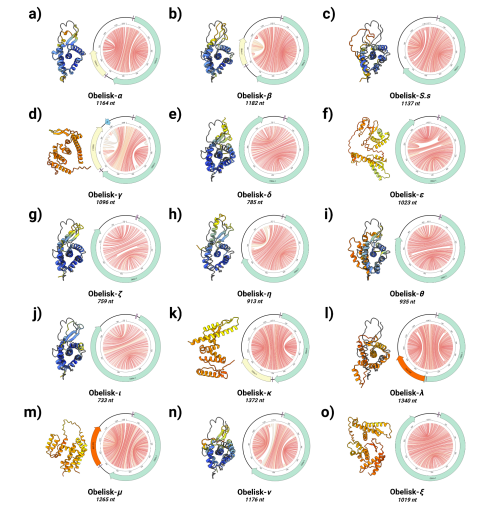In a groundbreaking revelation, scientists have uncovered a previously unrecognized class of viroid-like elements known as Obelisks, expanding our understanding of the intricate microbial world. Through a novel molecular-feature-focused search strategy, researchers identified these enigmatic entities in public RNA-seq datasets, marking a significant milestone in viroid research.
Obelisks, characterized by circular RNA genomes and conspicuous rod-like secondary structures, present a fascinating glimpse into the hidden realms of microbial diversity. Their genomes harbor open reading frames coding for a novel protein superfamily termed “Oblins,” hinting at complex biological functions yet to be fully elucidated.
Excitingly, Obelisks have been found to be globally distributed, with a notable presence in the human oral and gut microbiomes. Their prevalence varies across populations and anatomical sites, suggesting potential interactions with host factors such as diet and lifestyle. Moreover, Obelisks exhibit remarkable persistence within individuals, offering intriguing insights into their role in microbial ecosystems.
Notably, a compelling discovery highlights a specific Obelisk-host pairing in 𝘚𝘵𝘳𝘦𝘱𝘵𝘰𝘤𝘰𝘤𝘤𝘶𝘴 𝘴𝘢𝘯𝘨𝘶𝘪𝘯𝘪𝘴, shedding light on the potential symbiotic relationship between Obelisks and bacterial cells. This finding underscores the intricate interplay between microbial communities and their viroid-like inhabitants.
Crucially, Obelisks stand out by coding for a new class of proteins termed “Oblins.” This coding capacity distinguishes them from known RNA loops like viroids. However, unlike RNA viruses, Obelisks lack the genes for protein shells, and they surpass the size of genetic molecules found in cells, such as plasmids.
Scientists have discovered thousands of mysterious Obelisks in various locations, raising numerous questions regarding these peculiar phenomena. We’re curious about how they spread, breed, and what impact they might have on the creatures in which they exist. This discovery is significant in the study of microscopic living organisms, as it provides a glimpse into our planet’s complicated web of life. As researchers delve further into the world of microorganisms, these peculiar Obelisks give a new dimension to the already interesting story of life in nature.
Link to the article : http://tinyurl.com/mrsz64jf
